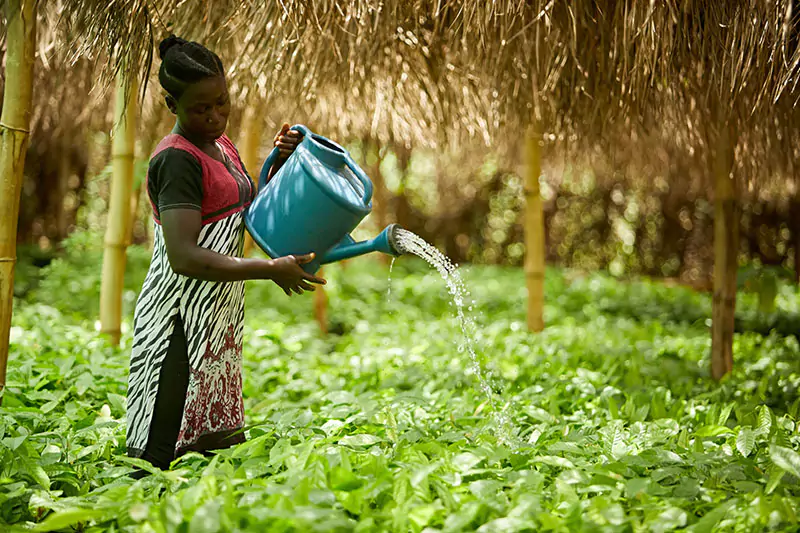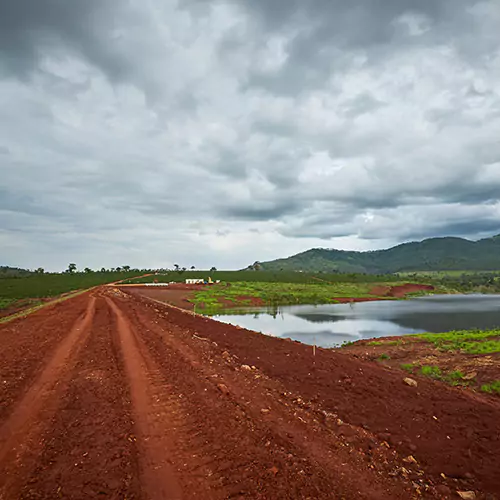Population growth and increasingly unpredictable weather patterns are placing an immense strain on our global water resources. By 2025, it’s predicted that half of the world's population will live in water-stressed regions.
Agriculture is the world’s largest user of water, consuming 70% of all freshwater resources. It’s vital we find ways to conserve this precious resource in line with UN Sustainable Development Goal 6, which aims to combat increasing water scarcity. Water isn't neatly fenced by administrative or geographic boundaries, meaning its use is often challenged by connected and sometimes competing interests.
Goals and Progress
We report on the goals and targets in the Natural Capital section of our 2020 Annual Report.
Scaling impact through sector initiatives such as:
Monitoring through AtSource+
There are many ways to tackle water waste while also protecting the yields that are vital to the livelihoods of farming communities. AtSource+ allows customers to calculate their total water footprint by measuring 19 different metrics across the supply chain, from farm through to factory. We measure the water use associated with factors like land use change, irrigation, fertiliser and electricity use.
This gives customers a detailed view of their water footprint and where they can have the biggest impact. They also have the option to create an action plan and track improvements in water use over time. The metrics tracked on AtSource+ include:
Impact of land use change
Tracking the water use (m³) related to deforestation over a 20-year period
Impact of pesticides and fertilisers
Tracking the water use (m³) related to energy consumed when producing and applying pesticides and fertilisers to land
Impact of irrigation
Tracking the water use (m³) related to infrastructure and machinery used to deliver water to crops, and water consumed to irrigate
Impact of processing
Providing a transparent view of the water use (m³) related to process and transport materials
From small seeds, great things
Creating the most efficient onion in the world
AtSource+ metrics to track progress:
- Surface/ground water consumption (Absolute: m³, Intensity: m³ / tonne product)
- Water intensity – agriculture (m³ / tonne product)
- Water intensity – processing (m³ / tonne product)
Onions are a very water intensive crop. ofi's onion breeding programme has developed a proprietary seed to tackle this problem. The seed produces onions with more dry matter to boost yields and reduce the amount of land, water, fertilizer and pesticides needed per hectare. This provides farmers with a high-yielding and virtually risk-free crop, while reducing their environmental footprint.
AtSource+ allows ofi customers to understand the impact of improved crops like this by providing detailed data on the total water consumption associated with their supply chain. That includes a breakdown of water intensity at both the agriculture and processing stages.
Read ofi news
I’ve been farming for 20 years in Egypt and working with Olam for the past two seasons. During this period, myself and fellow farmers have been able to reduce water consumption.
Vietnamese coffee farmers working with Olam have seen water consumption on their farms drop by 33% following the installation in 2016 of six pilot irrigation systems – and contributing to a significant drop in production costs.
- Transparency in Coverage
- Modern Slavery Statement
- CA Supply Chain Transparency Act
- Transparency in Coverage
- Modern Slavery Statement
- CA Supply Chain Transparency Act
Copyright © 2022
Olam International Limited. All Rights Reserved. Co Reg No: 199504676H





